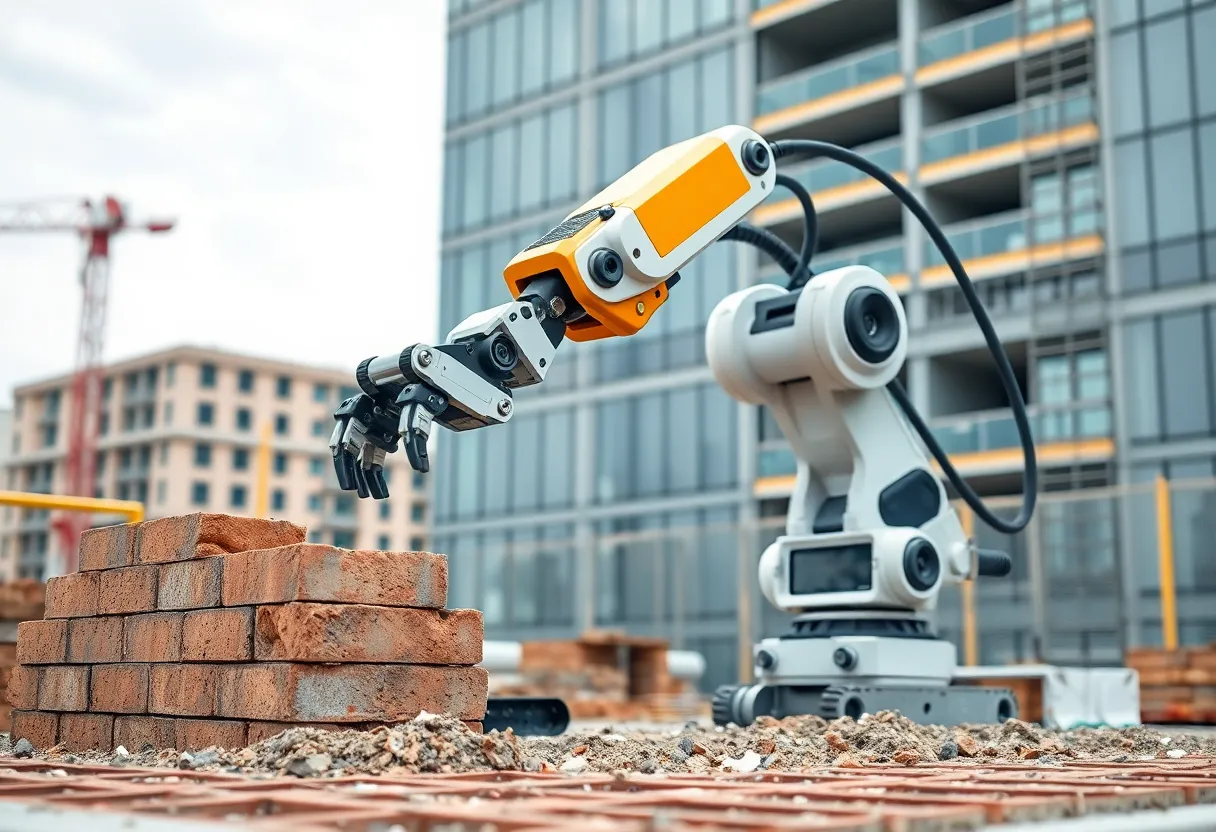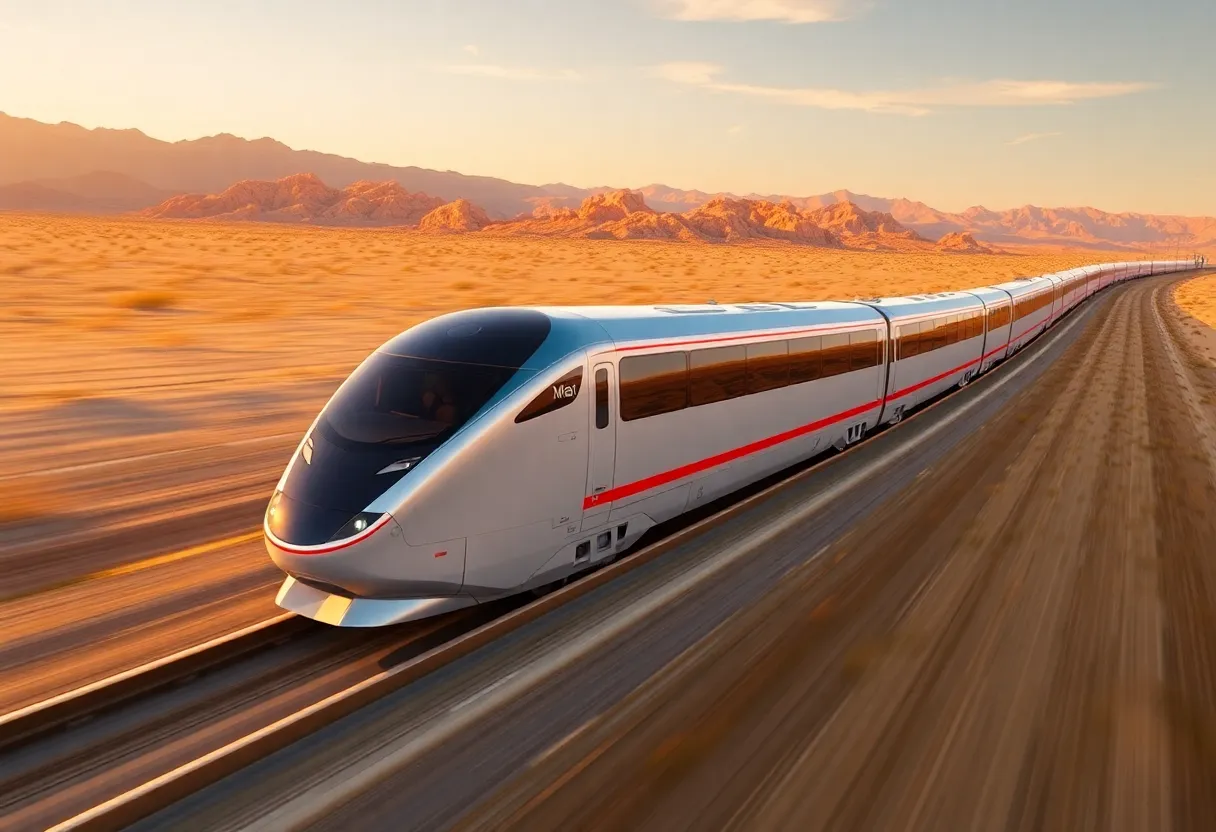News Summary
The construction robot market is experiencing substantial growth driven by rising labor costs and a demand for automation. With robots handling tasks such as bricklaying and 3D printing, they are becoming essential in increasing productivity and safety on job sites. Technological advancements and a trend towards smart building are further accelerating this change. Leading companies are innovating in various aspects of construction robotics, making these technologies vital for modern construction practices and addressing labor shortages and project timelines.
Construction Robot Market Set to Transform Industry
The Construction Robot Market is on the brink of a significant transformation, reshaping the global construction landscape as it introduces automation and precision into traditionally labor-heavy processes. With rising labor costs and an increasing demand for faster project completion, the adoption of robotics in construction is rapidly gaining momentum.
Automation and Efficiency
Construction robots are taking on a multitude of roles across various tasks that include bricklaying, concrete dispensing, demolition, and even 3D printing of building structures. By automating these processes, companies can address critical challenges such as labor shortages and escalating construction expenses. Furthermore, these technologies promise quicker project delivery, which is becoming essential in a fast-paced world.
Improving Safety and Quality
The integration of robotics in construction enhances overall safety, productivity, and consistent quality of work. As construction sites can be dangerous places, employing robots to perform high-risk tasks can significantly reduce accidents and injuries. This increased focus on safety not only protects workers but also complies with regulatory requirements.
Technological Advancements Drive Growth
Advancements in technology, particularly in fields like artificial intelligence (AI), machine vision, and autonomous navigation, are acting as catalysts for the growth of construction robots. These innovations allow robots to navigate complex environments, understand their surroundings, and work effectively alongside human labor. This fusion of technology and construction processes is paving the way for smart building initiatives and infrastructure development worldwide.
Market Expansion and Trends
The construction robot market is experiencing robust growth fueled by the demand for automation, the need to manage labor costs efficiently, and an emphasis on safety compliance. Key trends include the increasing integration of AI and IoT into robotic systems, the use of drones for surveying and monitoring, and growing investments in both autonomous and semi-autonomous machinery. Both government and private sector investments are playing a crucial role in facilitating infrastructure development and meeting sustainability targets.
Regional Insights
Geographically, the Asia-Pacific region, particularly countries like China and Japan, are leading in the adoption of construction robotics. Meanwhile, North America and Europe are also ramping up deployment for both large-scale commercial and residential projects, reflecting a global shift towards automation in construction.
Components and Services of Construction Robots
Construction robots comprise several vital components, which include hardware such as sensors, arms, mobility systems, and actuators, along with software that involves control algorithms, path planning, and BIM (Building Information Modeling) integration. Connectivity modules like GPS, LiDAR, and wireless communication are critical for effective operation.
Moreover, construction robots are equipped with various essential features, including safety systems, energy storage, and environmental sensors. These aspects ensure compliance with site regulations, thereby enhancing their utility on construction sites.
The Role of Service Providers
Core services within the construction robot market encompass robotic system installation, maintenance, remote monitoring, custom automation solutions, training and simulation, and software updates. Service providers are instrumental in aiding contractors to adapt robotic systems for specific construction tasks. Predictive maintenance services are also emerging to enhance efficiency and minimize downtime. Additionally, new software-as-a-service (SaaS) models are being developed for accessing system upgrades and data analytics for improved job site performance.
Leading Companies in the Market
Noteworthy companies leading the construction robot market include Brokk AB, Husqvarna Group, Built Robotics, and Boston Dynamics, among others. Their innovations address different aspects of construction, from demolition and cutting robots to autonomous earthmoving machinery and wearable robotics that enhance worker endurance.
A Revolution in Construction
This ongoing revolution in construction merges mechanical efficiency with digital intelligence, aiming to increase productivity, reduce risks, and promote sustainability. The scope of robotics in construction is expansive, offering innovative solutions for numerous industry challenges and setting new benchmarks for future developments.
Deeper Dive: News & Info About This Topic
Additional Resources
- New Atlas: Construction Robots are Driving Fast Innovations
- Wikipedia: Construction Robotics
- Data Center Frontier: How Construction Robots Are Helping GCs Meet Unprecedented Demand
- Google Search: Construction Robots
- IoT World Today: Robotics Construction Automation Startup Rises $80M
- Google Scholar: Construction Robots
- Fast Company: Concert Modular Construction Robot
- Encyclopedia Britannica: Construction Robots
- Robotics and Automation News: Bedrock Robotics Raises $80 Million
- Google News: Construction Robots
Author: Construction CA News
The CALIFORNIA STAFF WRITER represents the experienced team at constructioncanews.com, your go-to source for actionable local news and information in California and beyond. Specializing in "news you can use," we cover essential topics like product reviews for personal and business needs, local business directories, politics, real estate trends, neighborhood insights, and state news affecting the area—with deep expertise drawn from years of dedicated reporting and strong community input, including local press releases and business updates. We deliver top reporting on high-value events such as the Rose Parade, Coachella, Comic-Con, and the California State Fair. Our coverage extends to key organizations like the California Building Industry Association and Associated General Contractors of California, plus leading businesses in technology and entertainment that power the local economy such as Apple and Alphabet. As part of the broader network, including constructionnynews.com, constructiontxnews.com, and constructionflnews.com, we provide comprehensive, credible insights into the dynamic landscape across multiple states.




